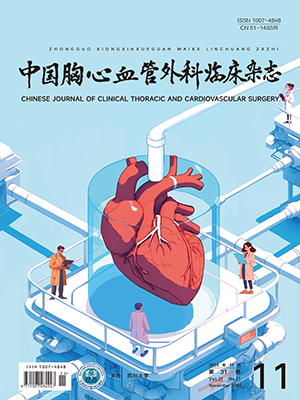Objective To verify the predictive value of Sino System for Coronary Operative Risk Evaluation(SinoSCORE) on quality of life in patients undergoing coronary artery bypass graft (CABG) surgery. Method A total of 234 patients in Peking University People’s Hospital undergoing CABG between November 2008 and September 2010 hadcompleted the preoperative and 6-month postoperative Short Form-36 (SF-36). There were 172 (73.5%) male patients and63 (26.5%) female patients. The average age was 63.0±10.1 years. According to the SinoSCORE, 234 patients were dividedinto three groups:low risk (SinoSCORE score less than 1 point,n=67), medium risk (SinoSCORE score 2-5 points,n=77) and high risk (SinoSCORE score more than 6 points,n=90) group. Clinical information of the 234 patients was collected, andthe score values of all patients were calculated according to the SinoSCORE model. Statistic methods were performed toevaluate the relationship between quality of life and SinoSCORE. Results The postoperative quality of life have improvedsignificantly, but the improvement of quality of life have no significantly different between groups. There was statisticallysignificant correlation between quality of life and SinoSCORE (P<0.05, r value at-0.150 to 0.255).Linear regression analysis showed that SinoSCORE was significantly collected with quality of life in multiple subgroups (P<0.05, r 2<0.1) .Conclusion SinoSCORE have statistically correlated with quality of life, and have certain but limited predictive value on quality of life in CABG patients.
Citation: LIU Xi,CHEN Yu,ZHAO Zhou,LI Xin,LIU Gang.. Predictive Value of SinoSCORE on Quality of Life in Patients Undergoing Coronary Artery Bypass Grafting. Chinese Journal of Clinical Thoracic and Cardiovascular Surgery, 2013, 20(6): 653-657. doi: 10.7507/1007-4848.20130205 Copy
-
Previous Article
右冠状动脉左心房瘘结扎术后并发脑梗死一例 -
Next Article
多发性错构瘤综合征的镜下发现




